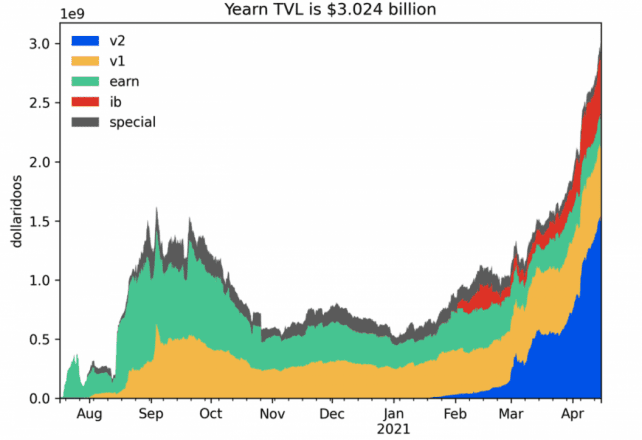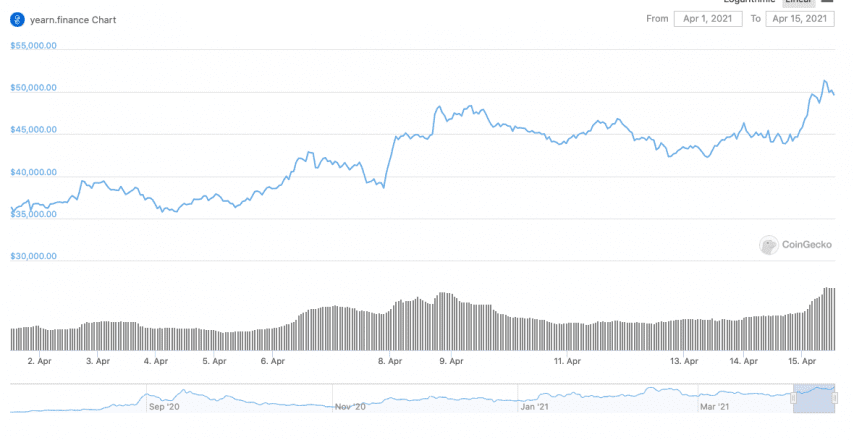
The Treasury Department is beginning to buy tens of billions of dollars in US bonds in a push to bolster the market. In a series of announcements, the department details its $50 billion buyback operation, which started on August 7th and will last until October 31st. The agency is looking to buy both short and […]
The post US Treasury Begins $50,000,000,000 Liquidity Injection As Trillion-Dollar Bond Market Witnesses Weak Demand appeared first on The Daily Hodl.

The proposed offer would require both SEC relief and shareholders' approval.
According to an end-of-year letter to investors published on Dec. 10, Grayscale Investments' CEO Michael Sonnenshein said that the firm may consider "a tender offer for a portion of the outstanding shares of GBTC [Grayscale Bitcoin Trust]" if the latter's exchange-traded fund conversion process is ultimately unsuccessful. Sonnenshein stated that "such tender offer would be for no more than 20% of the outstanding shares of GBTC" and would require both regulatory "relief" from the U.S. Securities and Exchange Commission as well as shareholder approval to approve such offer.
Grayscale and its subsidiary over-the-counter traded fund GBTC is currently embroiled in a lawsuit with the SEC after the latter denied Grayscale's application to convert the GBTC to a spot Bitcoin ETF on June 29, 2022. As told by Sonnenshein, Grayscale filed its opening brief against the SEC on October 11, 2022, and is due to submit its response to an SEC reply brief by January 13, 2022, with the final written brief due on February 3, 2022. "Shortly thereafter, a three-judge panel will be selected to hear oral arguments and rule on the case," Sonnenshein wrote to investors.
"In the event we are unsuccessful in pursuing options for returning a portion of the capital to shareholders, we do not currently intend to dissolve GBTC, but would instead continue to operate GBTC without an ongoing redemption program until we are successful in converting it to a spot bitcoin ETF."
Cointelegraph previously reported that GBTC, along with other major Grayscale digital currency funds, are trading at discounts to net asset values, or NAVs, of 34% to 69% due to solvency concerns arising from its parent company, Digital Currency Group, and its exposure to troubled cryptocurrency broker Genesis Global. At the time of publication, GBTC has $10.68 billion in Bitcoin (BTC) under management but is only worth $5.48 billion per market capitalization.

Higher volatility, equity offerings and resistance to regulatory sanctions are just a few reasons why investors should keep an eye on BTC.
Let's rewind the tape to the end of 2021 when Bitcoin (BTC) was trading near $47,000, which at the time was 32% lower than the all-time high. During that time, the tech-heavy Nasdaq stock market index held 15,650 points, just 3% below its highest-ever mark.
Comparing the Nasdaq's 75% gain between 2021 and 2022 to Bitcoin's 544% positive move, one could assume that an eventual correction caused by macroeconomic tensions or a major crisis, would lead to Bitcoin’s price being disproportionately impacted than stocks.
Eventually, these “macroeconomic tensions and crises” did occur and Bitcoin price plunging another 57% to $20,250. This shouldn’t be a surprise given that the Nasdaq is down 24.4% as of Sept. 2. Investors also must factor in that the index’s historical 120-day volatility is 40% annualized, versus Bitcoin's 72%, which is roughly 80% higher.
That’s the core reason why investors should re-evaluate investing in Bitcoin. The risk-to-reward potential after the downward adjustment in risk assets possibly leaves more upside for the cryptocurrency considering three factors: higher volatility during a moderate recovery, equity offerings and resistance to regulatory sanctions.
The problem is the market is now in a drawn-out bear trend and there are no signs that point to a quick recovery because double-digit inflation in many countries continues to pressure the central banks to sustain a tighter stance. Notice below how both Bitcoin and the Nasdaq have struggled throughout 2022.

The consequence of raising interest rates and removing debt assets stabilization programs is a recession-like environment. Whether or not a soft landing will be achieved is irrelevant because no sane investor will opt for credit-exposed and growth sectors when the cost of capital is increasing, and consumption is contracting.
Volatility is usually interpreted as negative, considering that the movements in price — either up or down — are accelerated. However, if the investor expects some form of recovery over the next 12 to 36 months, there is no reason to believe that Bitcoin will remain under pressure for that long.
Let's assume a neutral case, such as Bitcoin recovering 25% of the $48,700 drop since the all-time high, while the tech-heavy Nasdaq Index not only recovers the entire 24.4% losses year-to-date in 2022 but adds another 40% gains over that 1 to 3 year period.
That scenario would bring Bitcoin to $32,425, still 53% below its November 2021 all-time high. Thus, for those buying BTC on Sept. 2 at $20,250, that number would represent a 60% profit.
On the other hand, under this neutral market, the Nasdaq would reverse its losses and add 40%, reaching 19,563 points and totaling a 64.4% profit. To be clear: that would be 21.6% higher than the current all-time high.
The top 7 companies on Nasdaq are Apple, Microsoft, Amazon, Tesla, Google, Meta and Nvidia, all well-known tech giants. In stock markets, earnings figures are the most critical metric backing investors' optimism, meaning that higher profits can either be redistributed to shareholders, used to buy back stock or reinvested in the business, itself.
The problem lies when earnings go up, the companies have enormous incentives for issuing more stock, otherwise known as follow-on offers. Moreover, a tech company must constantly acquire emerging niche competitors to secure its leading position. Thus, bull markets create issues of their own, as valuations become too rich and buybacks make little sense.
For Bitcoin, having more miners, investors or infrastructure does not translate to a higher offering because the production schedule has been set from Day 1. The supply is fixed regardless of how the price fluctuates.
Nvidia, a major computer chip and graphics card manufacturer, reached a 68-week low on Sept. 2 after U.S. officials imposed a new license requirement for the company's artificial intelligence chip exports to China and Russia. Meanwhile, in mid-2021, China cracked down on mining facilities in the region, causing Bitcoin's hash rate to drop 50% in 2 months.
The main difference in both cases is Bitcoin's automated difficulty adjustment, which reduces the pressure on miners when there's less activity. While the U.S. regulation will likely impact Nvidia's exports, nothing is stopping Taiwanese TSMC chipmaker, South Korean Samsung or Chinese Huawei from growing and exporting products.
Bitcoin is a digital peer-to-peer electronic cash system, so it doesn't need centralized exchanges to survive. If governments opt to ban crypto trading completely, that would only emphasize the importance and strength of this decentralized network. Multiple countries have tried to suppress foreign currency from circulating, only to create a shadow market, with facilitators acting as illegal intermediaries.
Under the 3 different scenarios, varying from total blockage to a generalized bull market, odds favor Bitcoin against tech stocks at the current prices. Consequently, adjusted for its volatility, the risk reward strongly favors the cryptocurrency.
The views and opinions expressed here are solely those of the author and do not necessarily reflect the views of Cointelegraph. Every investment and trading move involves risk. You should conduct your own research when making a decision.
The start of Yearn Finance’s buyback program has already created a positive effect on the token’s value as prices have surged 13% in the last 24 hours.
Crypto Briefing reported that Yearn Finance had reached the $2.5 billion total value locked milestone. Days later, the protocol has now reached $3 billion in the vault’s protocols.

This growth is due primarily to the success of various yield-bearing strategies within different Yearn “vaults.” Members of the project develop different strategies for generating profits. These strategies are then offered to the public through the protocol’s interface.
With these new profits in hand, the protocol’s governance passed a buyback and build resolution in January, whose application will start this week.
The profits from staking the protocol’s native asset, YFI, will be used to buy back YFI from the market and increase buying pressure on the asset price.

So far, only $300,000 have been committed to buying back YFI; over time, this number will grow and will increase the scarcity of YFI.
Disclaimer: The author held ETH and several other cryptocurrencies at the time of writing. Andre Cronje, the founder of Yearn Finance, is an equity-holder in Crypto Briefing.